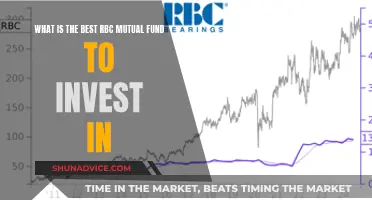
Debt funds are a type of mutual fund that provides investors with a low-risk investment option. They invest in fixed-income securities such as bonds, treasury bills, and government securities, providing stable and continuous income. Debt funds are ideal for those seeking a safe investment instrument with steady returns and low volatility.
There are various types of debt funds, including liquid funds, overnight funds, and credit risk funds, each with different risk profiles, financial goals, and investment horizons. When considering debt funds, investors should evaluate factors such as fund performance, management reputation, expense ratios, and asset allocation.
Debt funds offer advantages such as stability, liquidity, and tax benefits, making them a popular choice for conservative investors, those with short-term financial goals, and those nearing retirement. However, it's important to note that debt funds carry certain risks, including credit and interest rate risks, and returns may fluctuate over the long term due to shifts in interest rates.
| Characteristics | Values |
|---|---|
| Investment type | Debt funds are a type of mutual fund that generate steady income in the form of dividends on bond funds. |
| Investment portfolio | Debt funds invest in fixed-income instruments such as treasury bills, corporate bonds, government securities, and other debt and money market instruments. |
| Risk | Debt funds are considered less risky than equity investments. |
| Returns | Debt funds offer lower returns than equity funds. |
| Liquidity | Debt funds are highly liquid and can be redeemed quickly, usually within one or two working days. |
| Taxation | Short-term capital gains are taxed according to the income tax slab of the investor. Long-term capital gains are taxed at 20% with indexation benefits. |
| Investor type | Debt funds are suitable for risk-averse investors or those with a low-risk appetite who are seeking stable and consistent income. |
| Investment horizon | Debt funds are suitable for short-term investors (up to one year) and medium-term investors (one to three years). |
| Financial goals | Debt funds can be used to achieve a variety of financial goals such as earning additional income, liquidity, and higher returns than a regular savings account. |
What You'll Learn

Liquid Funds
- Mahindra Manulife Liquid Fund
- Aditya Birla Sun Life Liquid Fund
- Edelweiss Liquid Fund
- PGIM India Liquid Fund
- Mirae Asset Liquid Fund
- Canara Robeco Liquid Fund
- Nippon India Liquid Fund
- Bank of India Liquid Fund
- Axis Liquid Direct Fund
- Invesco India Liquid Fund
Investing Now: Choosing the Right Funds for Your Portfolio
You may want to see also

Money Market Funds
There are several types of money market funds, including:
- Prime Money Funds: These invest in high-quality, short-term money market securities issued by U.S. and foreign entities, including corporations, financial institutions, and the U.S. government.
- Government and Treasury Money Funds: These funds focus on short-term U.S. government debt securities, such as Treasury bills, bonds, and notes, as well as repurchase agreements.
- Municipal Money Funds: This type of fund invests in short-term municipal money market securities issued by states, local governments, and other municipal agencies. The earnings from these funds are typically exempt from federal income tax and sometimes state income tax as well.
- Standard Money Funds: Standard MMFs have a minimum investment horizon of three months and can offer higher yields by holding less liquid assets, longer durations, and slightly lower-credit-quality securities.
While money market funds offer a stable and liquid investment option, it's important to remember that they are not suitable for long-term investment goals like retirement planning, as they don't offer significant capital appreciation. Additionally, money market funds are sensitive to interest rate fluctuations and changes in monetary policy, which can impact their returns.
Tax-Exempt Bond Funds: When to Invest for Maximum Returns
You may want to see also

Dynamic Bond Funds
These funds are constructed to allow fund managers to use interest rate movements in the economy as an opportunity to generate higher returns. This is done by increasing or reducing the lending duration depending on whether the interest rates are heading down or up. For example, during a falling interest rate scenario, a fund manager may increase the holdings in long-term instruments like gilts.
The performance of dynamic bond funds depends on the fund manager's ability to read the direction of interest rates correctly. These funds generally have large assets under management (AUM), with portfolios worth several thousand crores.
Some examples of dynamic bond funds include:
- ICICI Prudential All Seasons Bond Fund
- SBI Dynamic Bond Fund
- Axis Dynamic Bond Fund
- DSP Strategic Bond Fund
- Bandhan Dynamic Bond Fund
- UTI Dynamic Bond Fund
- Aditya Birla Sun Life Dynamic Bond Fund
Mutual Fund Strategies: Long-Term Investments for Financial Freedom
You may want to see also

Corporate Bond Funds
SPDR Portfolio Corporate Bond ETF:
This exchange-traded fund (ETF) seeks to track the price and yield performance of an index that monitors investment-grade corporate bonds. It provides diversified exposure to the corporate bond market, with a focus on minimising costs and maximising efficiency.
IShares Broad USD Invm Grd Corp Bd ETF:
This ETF aims to replicate the performance of the ICE BofA US Corporate Index, investing primarily in US corporate bonds. With total assets of $10.86 billion, it is a sizeable fund offering exposure to a broad range of corporate debt.
IShares 5-10 Year invmt Grd Corp Bd ETF:
With total assets of $13.32 billion, this ETF focuses on investing in investment-grade corporate bonds with maturities between 5 and 10 years. By targeting a specific maturity range, the fund offers investors a more defined exposure to corporate debt.
Goldman Sachs Acss Invmt Grd Corp Bd ETF:
This ETF seeks to replicate the performance of the FTSE Goldman Sachs Investment Grade Corporate Bond Index. With total assets of $738.66 million, it provides investors with exposure to a portfolio of investment-grade corporate bonds.
IShares ESG USD Corporate Bond ETF:
The iShares ESG USD Corporate Bond ETF tracks the Bloomberg MSCI US Corporate ESG Focus Index, focusing on US corporate bonds that meet specific environmental, social, and governance (ESG) criteria. This fund allows investors to incorporate ESG considerations into their fixed-income portfolios.
Canara Robeco Corporate Bond Fund - Direct Plan - Growth:
This fund offers exposure to a portfolio of corporate bonds in India. It is managed by Canara Robeco Mutual Fund and provides investors with the opportunity to invest in a diversified basket of corporate debt.
ICICI Prudential Corporate Bond Fund - Direct Plan - Growth:
The ICICI Prudential Corporate Bond Fund is another option for investing in corporate bonds in India. It is managed by ICICI Prudential Mutual Fund and aims to provide stable returns with a focus on investing in high-quality corporate debt.
Cemetery Finances: Where Do Their Investments Lie?
You may want to see also

Banking and PSU Funds
Debt funds are a type of mutual fund that generates returns by lending money to the government and companies. One type of debt fund is a Banking and PSU Fund. These funds predominantly invest in debt instruments of banks, public sector undertakings, and public financial institutions. They are often considered the best alternative to bank deposits.
When considering a Banking and PSU Fund, it is important to keep in mind the investment horizon. These funds are ideal for investors with a horizon of at least two to three years. The high quality of borrowers, often government-backed or big banks, means there is a near-zero risk of non-payment.
- UTI Banking & PSU Fund
- ICICI Prudential Banking & PSU Debt Fund
- Kotak Banking and PSU Debt Fund
- Edelweiss Banking and PSU Debt Fund
- Nippon India Banking & PSU Debt Fund
- HDFC Banking and PSU Debt Fund
- Aditya Birla Sun Life Banking & PSU Debt Fund
- DSP Banking & PSU Debt Fund
- Bandhan Banking & PSU Debt Fund
- Franklin India Banking & PSU Debt Fund
Baillie Gifford Fund: Where Should Your Money Go?
You may want to see also
Frequently asked questions
Debt funds are a type of mutual fund that generates steady income in the form of dividends on bond funds. They invest predominantly in fixed-income instruments such as treasury bills, corporate bonds, government securities, and other debt and money market instruments.
There are several types of debt funds, including overnight funds, liquid funds, income funds, gilt funds, dynamic bond funds, ultra-short-term funds, and fixed maturity plans. Each type has a different investment objective, risk profile, and maturity period.
When choosing a debt fund, consider your investment horizon, risk appetite, and financial goals. Liquid funds, for example, are suitable for short-term investors who want to park their surplus funds in a safe and flexible option, while dynamic bond funds are ideal for riding interest rate volatility over a medium-term investment horizon.
Debt funds carry interest rate risk, credit risk, and liquidity risk. Interest rate risk refers to the possibility of changes in interest rates affecting the value of the fund's securities. Credit risk is the possibility of the issuer of the debt security defaulting on interest or principal payments. Liquidity risk is the possibility of the mutual fund house not having sufficient liquidity to meet redemption requests.
The taxability of debt funds depends on the holding period. If you sell debt fund units within three years of purchase, you will realise short-term capital gains, taxed as per your income tax slab. If you hold the units for more than three years, you will make long-term capital gains, taxed at a rate of 20% with indexation benefits.







